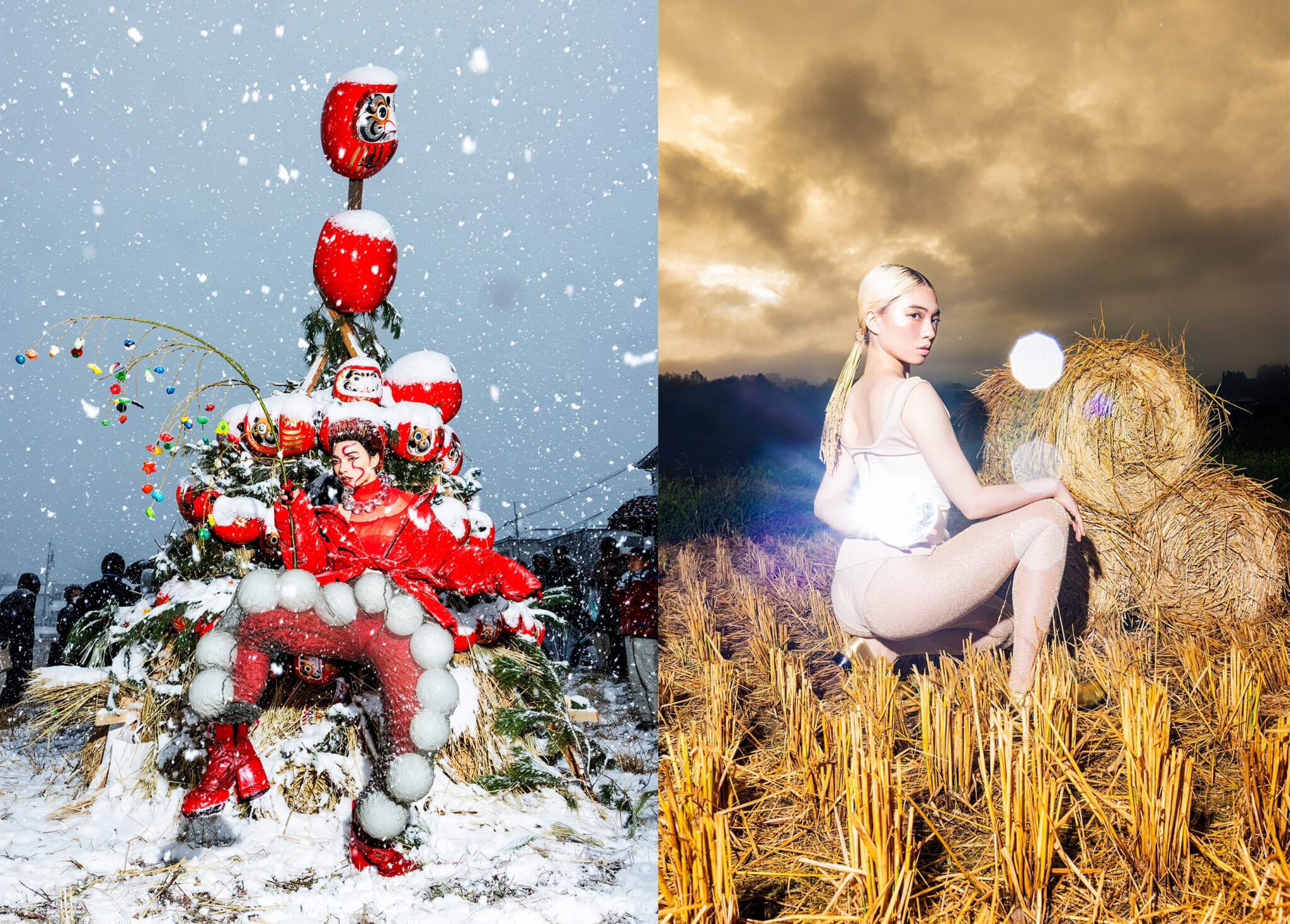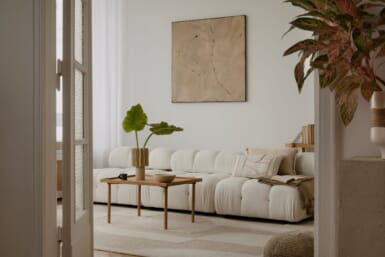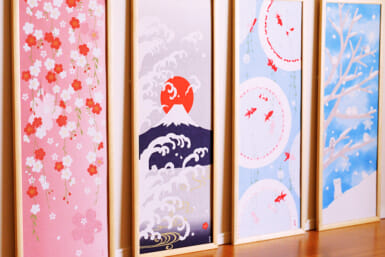This article appeared in Tokyo Weekender Vol. 5.
To read the entire issue, click here.
In August, I visited “Art Squiggle Yokohama 2024,” a fantastic exhibition in a warehouse on Yokohama Pier. The festival showcased a number of amusing, thought-provoking artists, but one piece in particular stood out: a large metal structure, isolated inside a huge black box, softly lit to alter viewers’ perceptions.
The structure, made of several interlocking squares and cubes, stood in a corner, bathed in hues of red, green and blue light. Illuminated from three different directions, with the exact color and intensity of each of these light sources in constant flux, the metallic surfaces became a site of ever-changing tone and shadow: hot pink, then violet, then pale blue. It’s a seemingly simple concept that opens a door for deeper exploration of the very process of perception — according to a description that accompanied the installation, each distinct hue only appears once in 45 days.
This piece, titled “Hue Moments,” is one of the latest works by the artist Midori Kawano. Over her nearly 20-year career, she’s delved into countless genres and mediums, from club photography to music videos, from graphics and art direction to product and space design. But one thing that’s remained constant is her strong visual identity: Her oeuvre is dominated by a distinctive palette of bold colors and a heady dose of 80s nostalgia.
Kawano recently stopped by the TW office, a high-tech lamp she custom designed in tow, where we discussed the creative process, the joy of working between mediums and light as an expression of diversity.
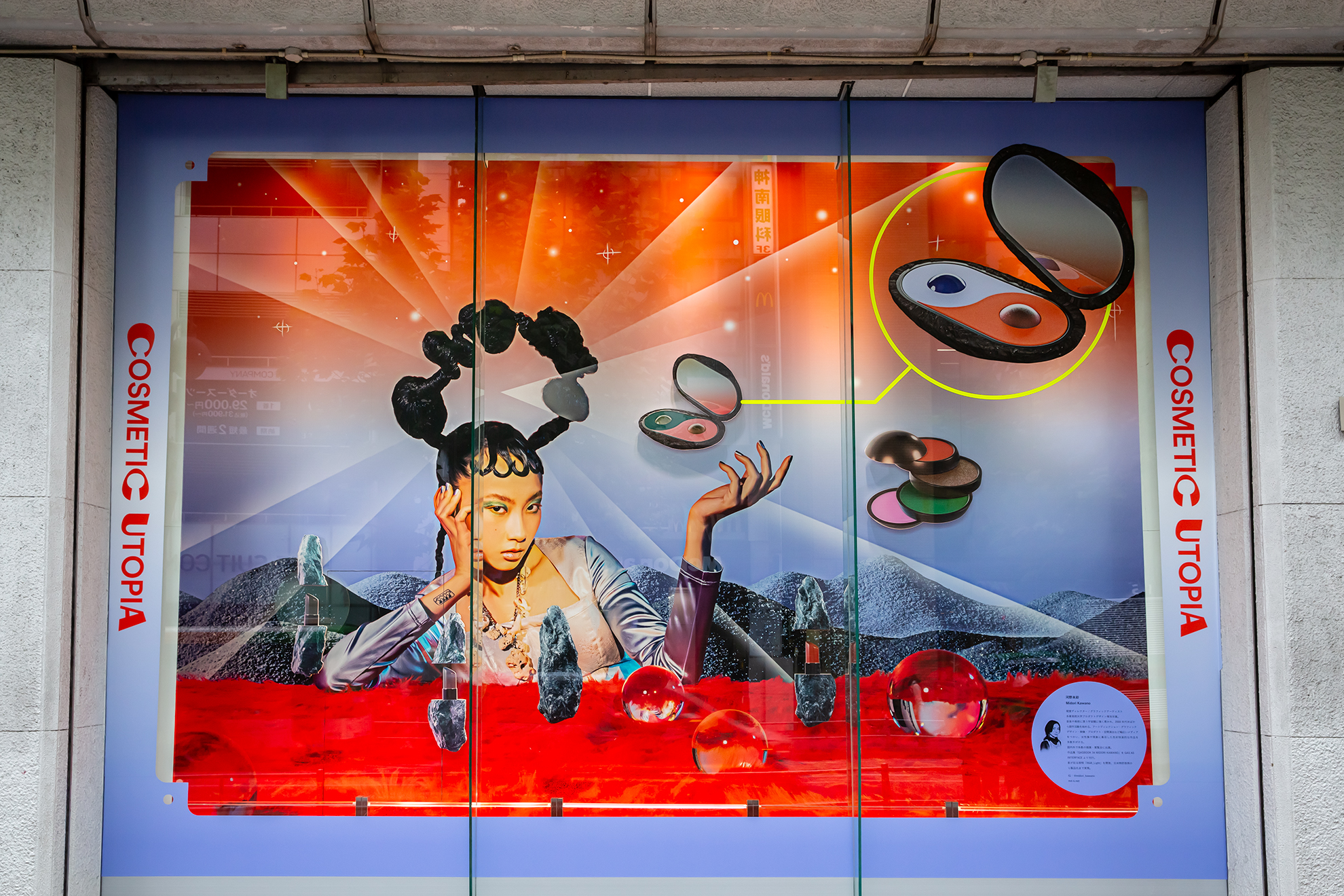
Determination and Serendipity
Growing up in rural Yokohama, Kawano was fascinated by the act of perception from a young age. “I also spent a lot of time alone looking at the ceiling and thinking about the connection between the universe and the mind,” she says. After graduating high school in the early 2000s, she enrolled in an art university to study product design. “I liked physics, art and making things, and I wanted to show the relationship between the micro and macro universes,” she explains, “but I didn’t know how to make a living out of it.”
Somehow, she found a way. She began working as a freelancer on a dizzying variety of projects that firmly enmeshed her in Tokyo’s underground scene: club photography, VJing and graphic design for event fliers. But she was most drawn to music videos as a medium — something she credits to a trip to India taken during her college days.
“I was traveling around, immersed in the sights and stimulation of India, and when I was moving from place to place, I listened to music on my Walkman,” she recalls. “Electronica, techno and traditional Indian music soundtracked my travels… That juxtaposition between the music and the environment stimulated my creative mindset, opening my mind to a world of endless possibilities. It made me want to create videos.”
Music Video and Collaborations
She made a name for herself by producing trippy videos for a range of electronic artists, like Evisbeats and De De Mouse, the latter with whom she began collaborating regularly. This is where she truly started to hone her style. Take, for instance, the video for De De Mouse’s “Baby’s Star Jam,” which premiered in 2007. Kawano directed it, and the visuals are rife with motifs that continue to populate her works — symbols of Egyptology and astrology drift across the screen, laid over kaleidoscopic colors and juxtaposed with psychedelic imagery.
“A lot of my imagery is quite retro,” she muses. “At the time, not so many people were creating things like that, although I feel like it’s quite popular now.”
Kawano’s passion for music is evident in much of her output, and it’s led her down a wide variety of creative paths. She’s designed album covers, art directed and produced visuals for artists like Tavito Nanao and Wednesday Campanella. She’s also very interested in the female form and femininity. Recently, she joined the creative team Ebizazen, a collective of models, photographers and hair and makeup artists, as an art director. They work together to create striking, surreal images, bizarre vignettes of life in an alternate world, bright with color and opulent materials; two years ago, their surreal, opulent photos of avant-garde dancer Aoi Yamada ended up in Vogue.
“My interests change across mediums,” Kawano says. She prefers to shift lanes before something gets popular. “When I switch mediums, it can deepen my depth of expression.”
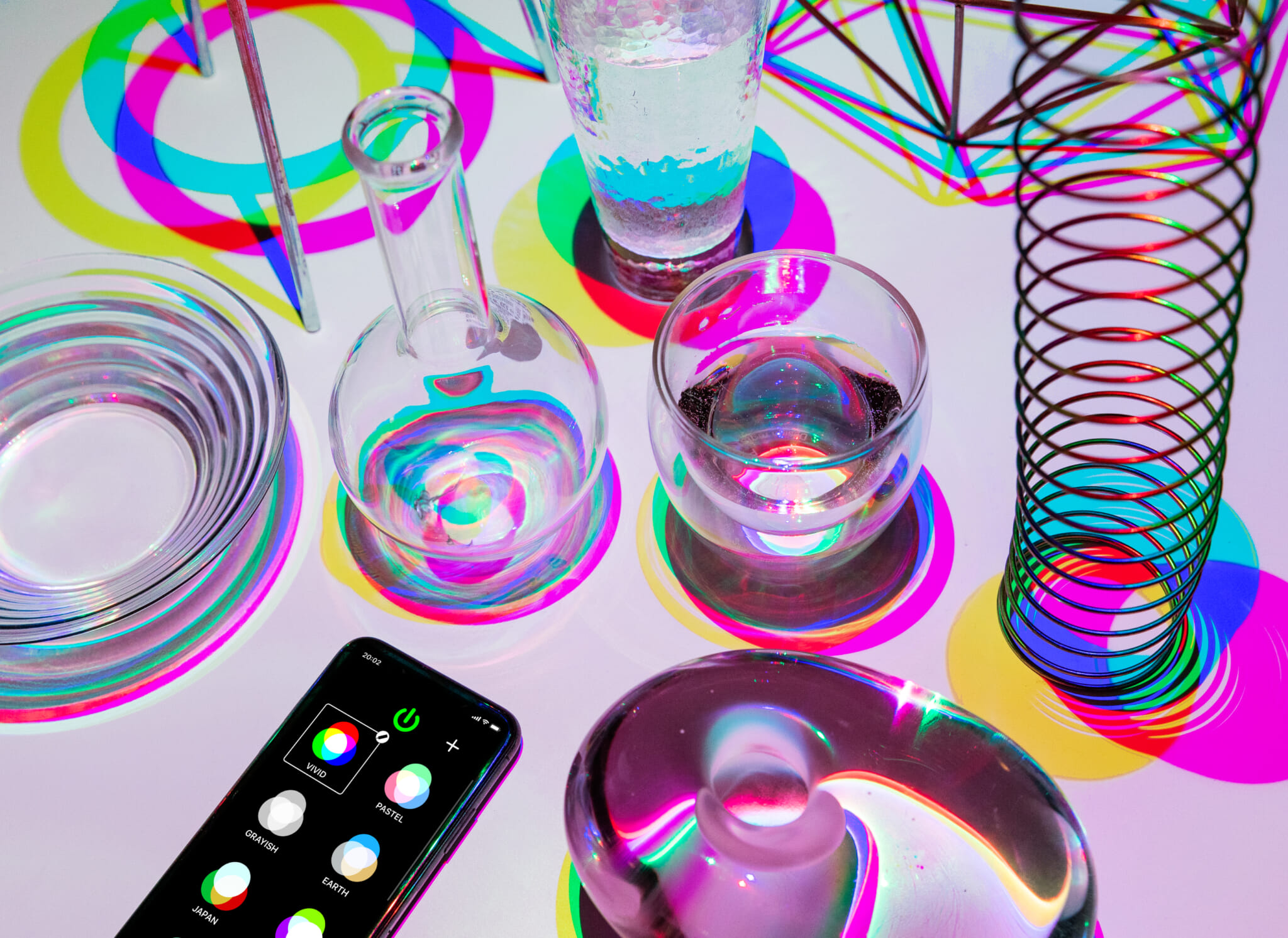
Changing and Evolving
Even though Kawano’s output is protean, returning to past projects is not off the table. And as the shifting shades and shadows of “Hue Moments” can attest, her deep interest in the interplay between color and light has followed her throughout her career. In 2020, she released a product that reifies this obsession: RGB_Light, an innovative lamp with three lightbulbs — one red, one green, one blue. It comes in a UFO shape, designed to be hung from the ceiling or another tall spot.
Utilizing the three primary colors of light, the lamp causes objects to cast technicolor shadows. With a smartphone app, you can manipulate the intensity and angle of each bulb, creating a custom vibrant silhouette in a variety of shades. Kawano originally designed the piece in 2005 for a school project, in a more primitive, college-student style (minus the smartphone, too, of course). “In college, I had often ended up with something that was just form, but no function — like lipstick packaging but not the lipstick.”
She demonstrates the 2020 upgrade during the interview, and it’s suitably impressive. Despite being such a simple concept — three different bulbs — its visual effect is striking. Even office pencils turn into items of wonder when placed below, emitting polychromatic shadows.
“Even though there had been over a decade between my designing it and exhibiting it, no one in the world had designed anything like it yet,” Kawano says. “And during that time, my view of the light had changed. As an artwork, I had come to think of it as a visible expression of diversity. If there is only one light, the shadow will be black, but if there are two or more lights, the shadow will be colorful.”

Overseas Expansion
RGB_Light is available for purchase in Japan, and Kawano says she recently obtained a US patent and is looking to start marketing the product overseas. “In Japan, the houses and spaces are small, but in countries like the US, there is a lot of space to show the light off and use it to its full potential. It could be in an office entrance hall, a children’s playroom, a music bar …”
It’s quintessential Kawano, to be constantly dreaming of the next thing — something bigger, something she has yet to try. One is left wondering if there is any medium that she hasn’t explored and what will be next. “The vague dreams I had when I was young are taking shape,” she tells TW. “I want to challenge myself more with big exhibitions like ‘Art Squiggle.’” Her next move, perhaps?
More Info
To learn more about Kawano’s work, visit md-k.net or follow her on Instagram.

